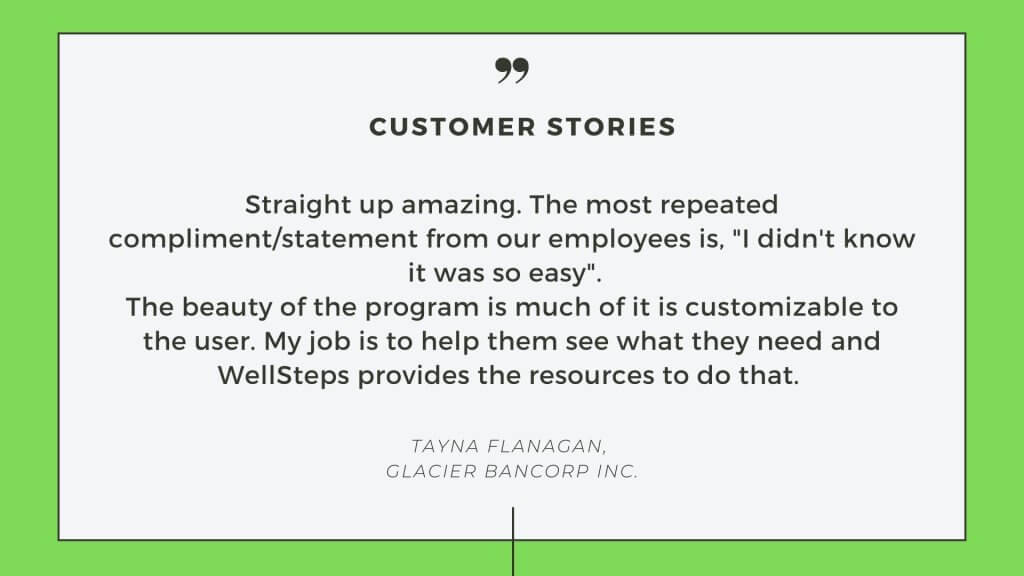The Harvard Business Review describes an employee wellness program as an initiative sponsored by employers to help employees adopt and maintain healthier behaviors, thereby enhancing their quality of life and boosting the organization’s performance.
Employee wellness programs are increasingly popular across various industries. Companies are beginning to see the benefits of supporting their employees in leading healthier lives, both at work and in their personal time.
What Should an Employee Wellness Program Include?
There are numerous types of employee wellness programs you can implement within your organization. Here are some suggestions:
- Display safety signs around the workplace to minimize the risk of accidents.
- Offer nutritious food options in the cafeteria and vending machines.
- Incorporate exercise breaks throughout the workday, such as allowing employees to take walks or do desk exercises to improve circulation.
- Provide health incentives outside of work, like discounted gym memberships and health food store vouchers.
- Add green plants in the office to enhance air quality and provide natural decor.
- Organize monthly or annual meetings to share health and wellness tips and offer unique opportunities for employees to improve their health.
- Hire corporate wellness consultants to guide both management and employees on building a healthier workplace.
- Equip the office with ergonomic furniture and tools to increase comfort and reduce physical strain.
- Offer retirement planning and financial consultations to employees.
- Allow pets in the office if the environment is safe and they do not disrupt other employees.
Feel free to integrate any combination of these ideas to create a customized employee wellness program. Each organization has differing environments and employee needs, and should tailor these suggestions accordingly.

RELATED: 10 Best Features of Wellness Platforms
What are the Costs of Employee Wellness Programs?
The costs of creating and maintaining an employee wellness program will vary for every company. It all depends on what kind of incentives and opportunities you want to offer your employees.
Let’s take a look at the costs associated with the most common incentives and opportunities for employee wellness in the workplace:
1. Biometric Screening
Biometric screening measures specific warning signals in the body that indicate potential health risks for the individual. These biometric measures include:
- Blood Pressure
- Stress
- Tobacco Usage
- Cancer Screening
- Body Fat (BMI)
- Cholesterol
- Blood Glucose
A company would be wise to provide on-site biometric screening to its employees to determine who requires the greatest health incentives and assistance. The average cost of on-site screenings is about $45 to $70 per employee.

On-site biometric screening is significantly cheaper than requiring employees to visit a physician’s office at around $100 to $200 each.
2. Health Coaching Companies
If your company has the extra money to spend on a top-level wellness program, you could obtain the services of a health coaching company for assistance. On average, approximately six health coaching sessions cost between $140 and $165.
A health coach meets with employees and advises them on the specific changes they need to make in their lives to be healthier. They will focus on key health issues like:
- Eating Habits / Nutrition
- Smoking
- Weight / Obesity
- Illnesses / Diseases
It is best to make it optional for employees to visit with a health coach because some employees may feel satisfied with their current health. In addition, it will save you money because you’ll only have to pay for the coaching sessions with employees who need them the most.
3. Gym Membership Discounts
Promote your employees’ physical health by providing gym membership discounts. For example, your company could collaborate with a local gym to offer employees reduced rates on their memberships for the initial month or year.
Gym membership discounts might not incur any cost for your company if the gym owner agrees to offer a discount in exchange for employee referrals. However, if the gym owner expects your company to cover the discount, the expense could range from $10 to $50 per employee each month.
RELATED: 13 Corporate Fitness Programs That Lead the Pack
4. Gifts and Prizes
A fun wellness program might include raffles or gift rewards for employees. For instance, you could distribute $20 gift cards to a health food store or supplement shop to 10 or 20 lucky employees each month. The goal is to provide incentives that encourage your employees to enhance their health.

Here are some popular gift ideas for employee wellness programs:
- Gift cards
- Athletic wear (e.g., T-shirts, shorts)
- Paid exercise time at work
- Health supplements
- Fruit baskets
- Water bottles
- Squeeze balls
You can set your own budget for the gifts and prizes. Perhaps you can only spend a few dollars on water bottles for each employee. But if you have a bigger budget, you may want to buy some pricier gift cards for some or all of your employees.
5. Benefits-based Incentives
Benefits-based incentives are generous employee benefits that could come in many different forms. Here are some examples of those benefits:
- Discounts on Health Insurance Premiums
- Contributions to a Health Savings Account
- Contributions to an Investment Savings Account
- Paid Vacation Days and Sick Days
- Lower Insurance Deductible or Co-Pay
Benefits-based incentives are the most expensive costs associated with an employee wellness program if you choose to include them. The precise cost depends on which incentives you add to the program.
The average cost of benefits-based incentives is $200 to $800 annually per employee. We recommend you start with one incentive and gradually grow your wellness program to include more incentives as your budget grows.
RELATED: How Much Does an Employee Wellness Program Cost?
What are the Advantages of Employee Wellness Programs?
You’re probably thinking, “Are the costs of an employee wellness program worth the rewards?” In most cases, the answer would be a definite “yes.” All you need is an organized strategy for implementing the program into action.

Here are the advantages of investing time and money in an employee wellness program:
1. Low Turnover Rate
The U.S. Bureau of Labor Statistics released a 2021 report which showed an increasing number of employees had left their jobs voluntarily over the past year. As a result, the number of job openings has increased.
Here are the setbacks of a high turnover rate:
- Reduces morale
- Decreases productivity
- Ruins company brand image
- Increases workload
- Costly to the company
A wellness program is a sure way to retain valuable employees and prevent them from applying for jobs at any of the competing companies. Furthermore, it encourages qualified job applicants to apply for open positions at your company and benefit from their skills and talents.
Here are the potential savings of maintaining a low turnover rate:
- $1,500 per hourly employee
- Between 100% and 150% of the salaries for technical positions
- Around 210% of the salaries for executive positions
Your company has the potential to save tens of thousands of dollars for each high-level employee retained. That should definitely offset the cost of maintaining an employee wellness program.
RELATED: Proof Wellness Programs in the Workplace Save Money
2. Boosts Employee Morale
The Gallup Organization had estimated that approximately 22 million employees with low morale cost American companies up to $350 billion per year. The related expenses include employee absenteeism, sickness, turnover, and low productivity.
Here are some signs of low employee morale:
- Low enthusiasm
- Low productivity
- Increased absences
- Poorly done work
- More mistakes on the job
- Customer complaints
Employees need to feel good about themselves and their jobs if you want them to become more productive and motivated.

A wellness program helps increase employee morale and makes employees want to come to work and do a good job. The result will be:
- High enthusiasm
- High productivity
- Fewer absences
- Good quality work done
- Fewer mistakes on the job
- Little to no customer complaints
Find out what your employees dislike about your company and their jobs. Then do whatever you can to address those issues in your wellness program. If morale and productivity increase drastically, your company could save thousands of dollars per month.
RELATED: 9 Workplace Well-Being Activities to Skyrocket Employee Productivity
3. Reduces Healthcare Costs
The Kaiser Family Foundation conducted a 2020 survey on how much money employers pay for their employees’ health insurance expenses. They found out the following:
- Employers pay approximately 83% of each employee’s health insurance premium for single coverage (6,200 annually)
- Employers pay approximately 73% of each employee’s health insurance premium for family coverage ($15,579 annually)
- 27% of small business employees don’t have to pay any percentage of their premiums, versus only 4% of employees in larger companies.
In a Harvard University research study published in February 2010, researchers discovered that wellness programs provided companies with a $3.27 return on every $1.00 invested. But, of course, it all depends on the program’s effectiveness for your employees.
Just think about how much you could save on your employees’ healthcare premium costs if you invested in a wellness program.
Just think about how much you could save on your employees’ healthcare premium costs if you invested in a wellness program. In addition to decreasing the monthly premium costs, fewer insurance claims would likely get filed too. It is a win-win for you and your employees.
RELATED: This Is the Impact of Employee Wellness Programs on Health Care Costs
4. Reduces Absenteeism
Absenteeism is when an employee has a habit of not coming to work. The common reasons for absenteeism include:
- Stress and Anxiety
- Illness / Sickness
- Unenthusiastic / Lack of Motivation
- Depression
- Resentment and Anger Toward the Company
- Injury or Physical Disability
Some employers assume absent employees are just being lazy and don’t want to come to work. However, the truth is that absenteeism has more to do with employees’ physical and mental health. If you can acknowledge that as an employer, you can do something about it.
Harvard University researchers discovered that employers save $2.73 for every dollar they spend on an employee wellness program. You could literally triple your cost savings by reducing absenteeism and healthcare premiums.
5. Better Customer Service
While it is clear that implementing wellness programs can lead to happier employers and employees, it is equally important to consider the positive impact on customers and clients.

According to Microsoft’s 2017 State of Global Customer Service Report, the following statistics highlight the significance of customer service:
- 54% of global consumers claim they have higher customer service expectations than during the previous year.
- 52% of people worldwide want companies to take better action in response to customer feedback.
- 72% of consumers expect customer service agents on the phone to know who they are and have previous insights into their past communications with the company.
- 67% of people worldwide claim to see improvements in customer service.
Providing exceptional customer service is crucial for any business. To build long-term relationships, you must treat customers with dignity, honesty, and respect if you wish to form a long-term business relationship with them.
You need to treat your customers with dignity, honesty, and respect if you wish to form a long-term business relationship with them.
An employee wellness program is vital for enhancing the quality of your company’s customer service. Happier and healthier employees are more likely to communicate with customers effectively and positively.
Consequently, your company can benefit from increased sales and profits, as satisfied customers are more likely to return for repeat business.
RELATED: The Top 7 Reasons to Have a Wellness Program
Conclusion
The most challenging aspect of an employee wellness program is encouraging long-time employees to participate. Even if they wish to be healthier, breaking unhealthy habits and adopting a new wellness routine can be tough.
A professional WellSteps wellness consultant can help overcome this challenge. Schedule a free demo with our wellness consultation team to learn how our wellness program solutions can be effectively implemented in your company.

Common Questions About Employee Wellness Programs
What are some of the most popular activities implemented into an employee wellness program?
Employers must create a wellness program that specifically addresses the common health issues of their employees. Some popular examples of employee wellness activities include:
- Stress Management Programs
- Smoking Cessation Programs
- Weight Loss Competitions
- Exercise Incentives and Opportunities
- Wellness Assessments
- Vocational Training
- Financial Coaching
Your wellness consultant will recommend which activities are best for your organization after performing a complete assessment of your employees’ health and wellness needs.
RELATED: 5 Ways a Corporate Wellness Consultant Helps Programs
How long will it take for my company to start benefiting from an employee wellness program?
It is impossible to predict how long it would take to benefit from an employee wellness program because every company is different. But if your employees are eager to participate in the wellness program, you will notice the benefits quickly.
The best thing to do is to have patience and focus on creating a quality wellness program. If you do that, the benefits will come sooner than you think.